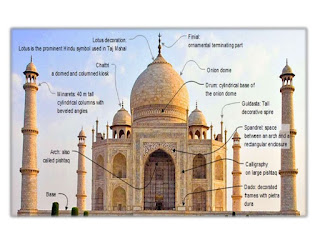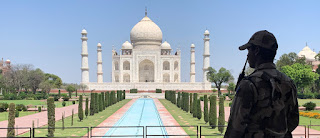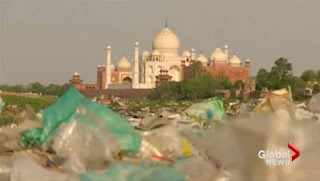taj mahal features: Architecture - Design, Layout, Features
Who built the Taj Mahal and why?
taj mahal features The Mughal emperor Shah Jahan built this architectural wonder in memory of his favorite wife, Mumtaz Mahal, who died in 1631 during the birth of her fourteenth child. There are tombs of the queen and emperor in the Taj Mahal itself. On the grounds, there is also an exquisite mosque, beautiful gardens, and a large guesthouse.
taj mahal features
Percy Brown, a respected art critic, once remarked, "As Augustus' glorious statement that he built Rome with bricks and left it with marble, similarly Shah Jahan found Mughal cities of stones, he called them Left of marble ". Shah Jahan was fond of building and architecture and in addition to the Taj Mahal built several other famous monuments including Agra Fort and Red Fort and Jama Masjid in Delhi.
With the chief architect Ustad Ahmad in charge of the construction, the Taj Mahal was completed in 20 years with 20,000 workers, artisans, and stoneworkers as well as 1,000 elephants carrying materials. The cost of this entire project was around 32 million rupees at that time.
Effect behind Taj Mahal
Inspired by the words of Bible Khan (a goldsmith and a poet), "Mumtaz may be the palace's paradise", the Taj Mahal was built as a reflection of Mumtaz Mahal's home in heaven. The design was meant to create the image of a heavenly garden on earth and suggests that the departed queen's soul resides in heaven, her body also resides in a worldly paradise surrounded by beauty and peace.
The form of the Taj Mahal was inspired by a Persian architectural technique known as "hashtag bihishta" (Eight Pardes). Such a structure often consists of a square, rectangular or radial buildings with a central domed chamber surrounded by eight elements. effects of air pollution on taj mahal
Echoes of such a building can also be found in the nearby Itmad-ud-Daula's mausoleum, also known as Baby Taj due to its architectural resemblance to the World Wonder. This tomb was built by Queen Nur-Jahan for her father who was also the grandfather of Mumtaz Mahal. From the use of white marble to the "center and sides" burial strategy, the mausoleum of Itmad-ud-Daula marked a new era of Mughal architecture and laid the architectural foundation for the Taj Mahal.




Comments
Post a Comment